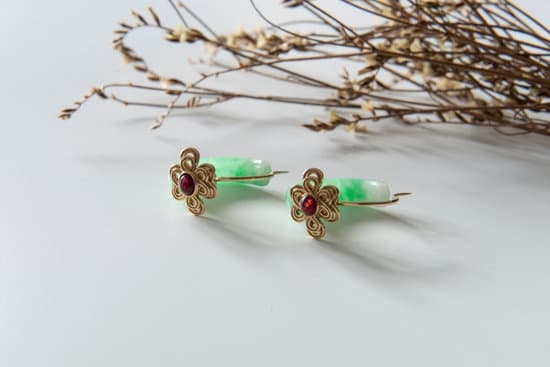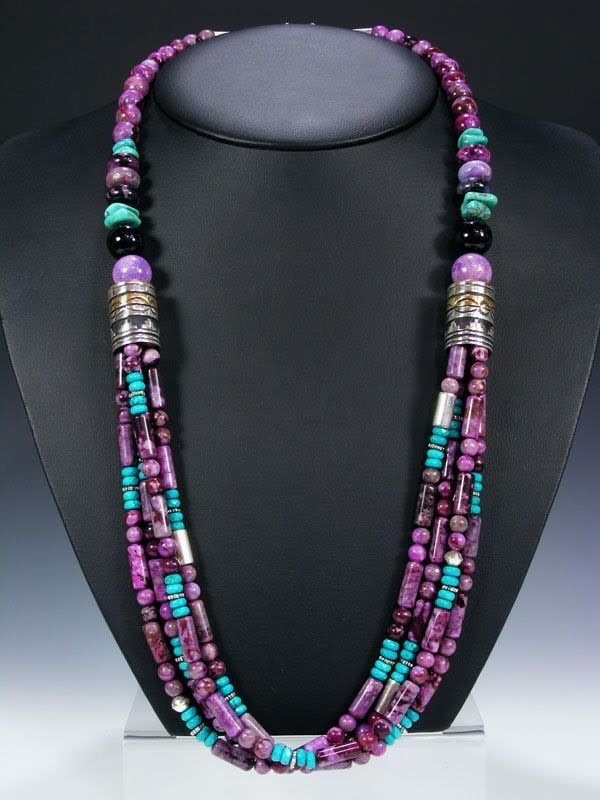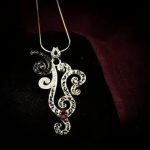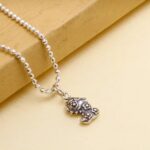The history of jewelry clasps spans centuries, with these tiny but crucial components playing a significant role in the design and function of various pieces of jewelry. They are not only responsible for securing and fastening different types of jewelry, but they also contribute to the overall aesthetic and style of the piece.
In this article, we will explore the evolution of jewelry clasps throughout history, from their ancient origins to modern-day designs, shedding light on their importance and impact on jewelry craftsmanship.
Throughout the ages, jewelry clasps have undergone countless transformations, reflecting the advancements in technology, changes in fashion trends, and cultural influences. By examining the development of these small yet essential elements, we can gain a deeper understanding of how they have shaped the world of jewelry design and production.
In this comprehensive exploration, we will delve into the earliest forms of jewelry fasteners in ancient civilizations, observe their evolution during the Middle Ages and Renaissance periods, trace their impact on 19th-century industrialization and design movements such as Art Nouveau and Art Deco, and finally examine contemporary trends and technological advancements in modern clasp styles. By doing so, we can appreciate the enduring significance of jewelry clasps throughout history.
Ancient Origins
Throughout history, the use of jewelry clasps has been essential in the creation and wearing of jewelry. The ancient origins of jewelry clasps date back to some of the earliest civilizations, where various forms of fasteners were used to secure adornments in place. This section will explore the development and significance of early jewelry fasteners, shedding light on their importance in ancient societies.
Early Forms of Clasps
In ancient civilizations such as Egypt, Mesopotamia, and China, jewelry clasps were crafted from materials such as bone, wood, or metal. These early forms of clasps were rudimentary in design but served the practical purpose of securing necklaces, bracelets, and other adornments around the body. Some examples include simple hook and loop systems, as well as primitive hinge mechanisms.
Social and Cultural Significance
The development of jewelry clasps in ancient societies also reflected social and cultural practices. Jewelry was not only worn for aesthetic purposes but also held symbolic and ritualistic meanings. In many cases, intricately designed clasps were used to denote status, belonging to a particular group or community, or even serving religious or ceremonial functions.
Legacy in Modern Jewelry
The history of jewelry clasps has left a lasting impact on the modern designs we see today. The craftsmanship and ingenuity displayed by ancient artisans continue to influence contemporary clasp designs. Furthermore, understanding the cultural significance of early clasps adds depth and richness to the appreciation of these timeless pieces of adornment.
Middle Ages
During the Middle Ages, jewelry clasps continued to evolve in both design and function. As craftsmanship and technology advanced, so did the methods used to secure jewelry. This period marked a significant shift towards more intricate and ornate designs, which led to the development of more elaborate clasps.
Utilitarian Functionality
In the Middle Ages, jewelry was not only worn for adornment but also as a symbol of status and wealth. As a result, clasps became increasingly important in ensuring that valuable pieces remained secure on the wearer. The use of hooks, pins, and hinges became more common during this time, allowing for greater flexibility in jewelry design while still maintaining functionality.
Symbolism in Clasp Design
The evolution of clasps during the Middle Ages also saw an increase in symbolic elements incorporated into their design. Many clasps featured motifs such as animals, flowers, or religious symbols, adding layers of meaning to the jewelry they secured. In some cases, clasps were even used as a form of personal expression or a way to communicate one’s beliefs or affiliations.
Influence on Modern Jewelry
The advancements made in clasp design during the Middle Ages continue to influence modern jewelry today. Many contemporary jewelers draw inspiration from historical designs and techniques when creating their own unique clasps. The use of decorative elements and symbolism in clasp design can be traced back to this pivotal period in jewelry history.
Renaissance and Baroque Periods
During the Renaissance and Baroque periods, there were significant advancements in clasp technology that greatly influenced jewelry design. The use of more sophisticated mechanisms allowed for increased security and functionality in fastening jewelry pieces. One notable innovation during this time was the development of the spring ring clasp, which provided a more secure closure for necklaces and bracelets. This technological advancement not only improved the practicality of jewelry clasps but also expanded the design possibilities for jewelers.
In addition to functional improvements, the Renaissance and Baroque periods also saw a heightened emphasis on the aesthetic appeal of clasps. Intricate designs and ornate detailing became increasingly popular, with jewelers incorporating motifs from nature, mythological symbols, and religious iconography into their clasp designs. These decorative elements added an element of artistry to jewelry clasps, elevating them from merely functional components to visually striking focal points within the overall design of a piece.
The innovations in clasp technology during the Renaissance and Baroque periods laid the foundation for modern jewelry fasteners. The combination of improved functionality and artistic expression set a precedent for future generations of jewelers to continue refining and experimenting with clasp designs. As we look back on this period in the history of jewelry clasps, it is clear that these developments played a crucial role in shaping the evolution of jewelry design as we know it today.
19th Century
The 19th century marked a significant period in the history of jewelry clasps, largely due to the impact of the Industrial Revolution on manufacturing and design. This era saw a shift from handcrafted jewelry to mass production, as new technological advancements allowed for the creation of intricate and standardized clasps at a much faster rate. The introduction of machine-made components also made jewelry clasps more affordable and accessible to a wider range of consumers.
One notable development during this time was the invention of the box clasp, also known as the “snap clasp,” which quickly gained popularity for its ease of use and secure closure. This simple yet effective design featured a hinged mechanism that allowed the clasp to snap shut with a satisfying click, providing a reliable fastening for necklaces, bracelets, and other types of jewelry. The box clasp became synonymous with Victorian-era jewelry and remains a timeless classic in modern designs.
In addition to the widespread adoption of box clasps, advancements in metallurgy and metalworking techniques led to an increased variety of materials being used for clasps. Gold, silver, and platinum were now more readily available, allowing jewelers to experiment with different finishes and embellishments. The 19th century also saw an increased use of gemstones and enamel work in clasp designs, adding an extra layer of intricacy and decorative appeal to jewelry pieces.
| Industrial Revolution Impact | Advancements in Clasp Designs |
|---|---|
| New technological advancements allowed for mass production of intricate clasps. | The invention of the box clasp provided a secure closure for jewelry. |
| Metallurgy improvements led to increased variety in clasp materials. | Greater experimentation with gemstones and enamel work in clasp designs. |
This period witnessed a flourishing diversity in jewelry styles and designs as well. The newfound ability to produce clasps on a larger scale encouraged innovative approaches to jewelry making. Elaborate filigree work, ornate motifs inspired by nature or historical themes, and romantic symbolism were prevalent aesthetic choices during this time. These stylistic flourishes were often incorporated into the design of clasps, showcasing intricate craftsmanship that elevated the overall look of the piece.
As we reflect on this pivotal era in the history of jewelry clasps, it is evident that the Industrial Revolution had an enduring impact on their evolution. The developments during this period laid the groundwork for future innovations in manufacturing processes and design techniques that continue to influence contemporary clasps today.
Art Nouveau and Art Deco
During the late 19th and early 20th centuries, the Art Nouveau and Art Deco design movements had a significant impact on jewelry clasps. Art Nouveau, which emerged in the 1890s, was characterized by its use of natural forms and structures, as well as asymmetrical designs.
This led to the creation of jewelry clasps that incorporated flowing lines, organic shapes, and intricate details inspired by nature. These clasps often featured motifs such as flowers, insects, and birds, reflecting the artistic philosophy of the movement.
On the other hand, the Art Deco movement, which reached its peak in the 1920s and 1930s, was defined by its geometric shapes, bold colors, and streamlined aesthetic. Jewelry clasps during this period were influenced by these characteristics, with emphasis placed on sleek and angular designs. Clasps became more functional and aesthetically striking, incorporating elements such as sharp lines, symmetry, and striking color contrasts.
These design movements not only influenced the aesthetic qualities of jewelry clasps but also spurred innovation in clasp technology. As demand for intricate and elaborate designs grew during this time, jewelers developed new techniques for creating more complex clasps. This era saw advancements in mechanisms such as hidden clasps, double clips, and concealed fasteners that allowed for seamless integration into jewelry pieces.
The influence of these design movements is still prevalent today in modern clasp styles. The legacy of Art Nouveau and Art Deco continues to inspire contemporary jewelry designers to create unique and visually captivating clasps that pay homage to these influential periods in art history.
| Art Movement | Main Characteristics |
|---|---|
| Art Nouveau | Natural forms, asymmetrical designs |
| Art Deco | Geometric shapes, bold colors |
Modern Clasps
In today’s jewelry industry, clasps have become more than just functional components; they are now an essential design element. The evolution of technology has played a significant role in pushing the boundaries of clasp design, allowing for more innovative and creative solutions. Here are some of the modern technological advancements and contemporary trends in jewelry clasps:
- Magnetic Clasps: One of the most popular innovations in clasp technology is the use of magnetic closures. These clasps provide a seamless and elegant look, as they fasten effortlessly with a simple alignment of the magnets. They are particularly favored for bracelets and necklaces.
- Smart Clasps: With the rise of wearable technology, smart clasps have made their way into the jewelry market. These clasps may include features such as activity tracking, NFC technology for contactless payments, or even personalized notifications through connected devices.
- 3D Printing: The advancement of 3D printing has revolutionized the way jewelry clasps are designed and manufactured. This technology allows for intricate and customizable designs that were previously difficult to achieve through traditional methods.
The history of jewelry clasps has paved the way for these modern advancements, as designers continue to push the boundaries of innovation in order to meet both functional and aesthetic demands. As technology continues to advance, we can expect to see even more exciting developments in clasp design in the future.
The Future of Jewelry Clasps
Here are some anticipated innovations and trends in clasp design:
- Magnetic Clasps: With advances in magnetic technology, we can expect to see more jewelry clasps utilizing magnets for easy and secure fastening. These innovative clasps provide a convenient option for individuals with limited dexterity or those who struggle with traditional clasps.
- Smart Clasps: In the age of wearable technology, smart jewelry clasps may become a reality. These high-tech clasps could potentially track biometric data, offer security features, or even serve as a digital payment method.
- Sustainable Materials: As eco-consciousness continues to shape consumer preferences, we anticipate a rise in jewelry clasps made from sustainable materials such as recycled metal or bio-based polymers. Designers may also explore incorporating renewable energy sources into clasp designs.
As technology continues to influence all aspects of our lives, it is inevitable that it will have an impact on the future of jewelry clasps. Innovations such as magnetic and smart clasps will provide convenience and functionality, while the use of sustainable materials will appeal to environmentally conscious consumers. The future of clasp design is sure to be an exciting journey that reflects both technological progress and shifting consumer values.
Conclusion
In conclusion, the history of jewelry clasps has truly been a testament to the ingenuity and creativity of humanity. From simple designs in ancient times to complex and innovative clasps in modern jewelry, the evolution of clasps has mirrored the advancements in technology, design movements, and societal changes throughout history. The significance of jewelry clasps goes beyond their practical function of securing pieces together; they also serve as a reflection of cultural trends, artistic influences, and craftsmanship.
Looking back at the ancient origins of jewelry fasteners, it is fascinating to see how something as seemingly mundane as a clasp has played a crucial role in the development and sophistication of jewelry design. The Middle Ages saw the evolution of clasps from basic hook-and-eye closures to more intricate mechanisms like spring rings and box clasps.
The Renaissance and Baroque periods brought about innovations such as hidden sets and latches, showcasing not only technical advancements but also an increased emphasis on decorative elements.
As we look ahead to the future of jewelry clasps, one can anticipate even more exciting developments in terms of materials, functionality, and design aesthetics. It is clear that the history of jewelry clasps is far from over; it continues to be a dynamic and evolving aspect of jewelry-making that will undoubtedly leave its mark on future generations.
As we continue to appreciate the legacy and significance of jewelry clasps throughout history, we can also look forward to witnessing new innovations and trends in clasp design unfold before our eyes.
Frequently Asked Questions
How Can You Tell How Old a Jewelry Clasp Is?
You can tell the age of a jewelry clasp by examining its design, materials, and construction. Antique clasps may have intricate designs or be made of materials no longer commonly used in modern jewelry making.
Who Invented Clasps?
The history of clasps dates back to ancient civilizations where they were primarily used for functional purposes. However, it was not until the Victorian era that decorative clasps became popular in jewelry. The idea of using clasps as both a functional and ornamental element is attributed to this time period.
When Were Barrel Clasps Used in Jewelry?
Barrel clasps have been used in jewelry since the late 19th century. They were often used in necklaces and bracelets as a way to securely fasten them. Over time, the design and use of barrel clasps have evolved, but they continue to be a common type of clasp in jewelry making today.

Welcome to my jewelry blog! My name is Sarah and I am the owner of this blog.
I love making jewelry and sharing my creations with others.
So whether you’re someone who loves wearing jewelry yourself or simply enjoys learning about it, be sure to check out my blog for insightful posts on everything related to this exciting topic!





